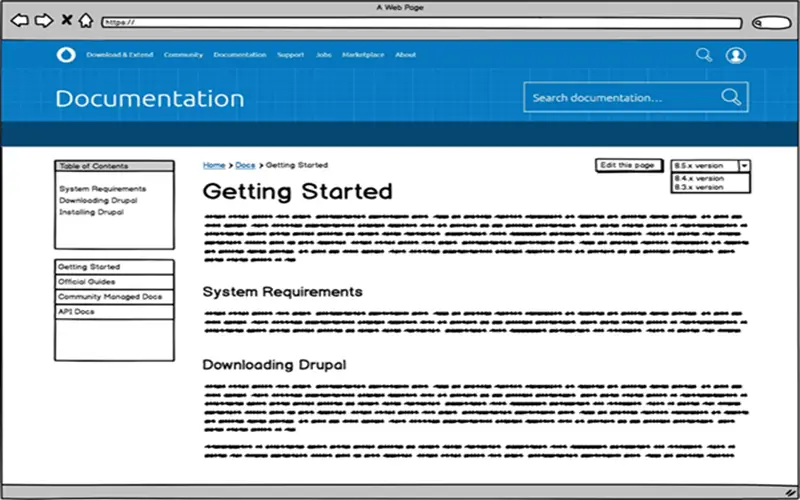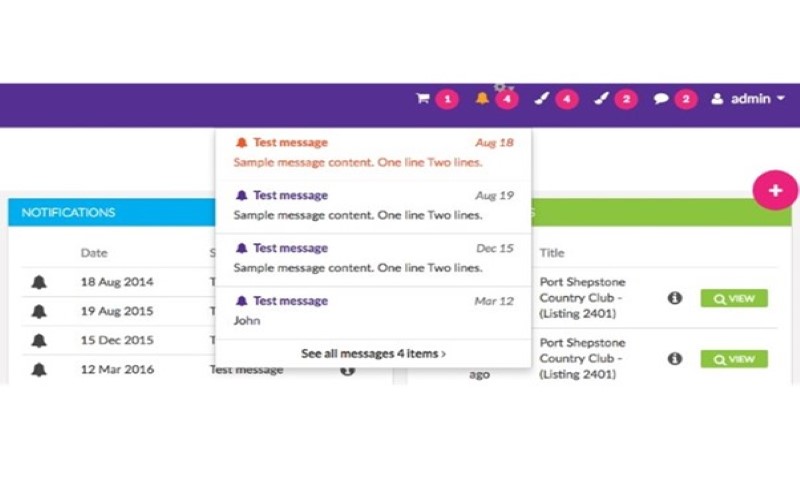Drupal is a free platform for managing content digitally. It enables publishing, writing, editing, modifying, and deleting content. Its robust platform supports a wide range of content types like text files and media files with high customization facilities. For example, users can display an entire article or just a summary of the article.
But the Drupal doesn’t stop here. It’s more than just a CMS. It is emerging as a website development platform as well. Software developers are jumping on new frameworks like Drupal or WordPress, specifically designed for content management. Developers design, build, and maintain web applications using frameworks like Ruby on Rails, Angular JS, and ASP.Net. These frameworks provide developers with tools, libraries, and resources to develop applications. These frameworks support some specific languages that allow developers to write codes. For example, Angular JS supports HTML, CSS, Java, and Jscript. ASP.net supports C and C#.
So, selecting a framework is a crucial task for developers. A framework should be easy to use, support multiple languages, provide good code libraries, and be budget-friendly. Drupal, with its powerful and versatile functionalities, like modular architecture, attractive themes, and security, is becoming popular among developers.
In this article, we will learn ten hidden features of Drupal to build a web application.
1. Community Support
The long-term success and feasibility of a framework depend on its developing communities. The framework with a large and active community tends to be more reliable. The developers who build Drupal know this framework inside out. These developers are actively involved in enhancing the functionalities of the framework by designing different themes and module creation.
They extend their valuable knowledge inside the community to make Drupal highly customizable for web development. If these kinds of specialised teams are available to support a framework, then you can easily trust on its reliability.

2. Structured Documentation
Documentation plays a vital role in any web application. It can contain information from scratch like user requirements, project planning, technical details (frameworks, languages, database), and deadline of the project. One can say it is the first step in software development. For developer’s team, it is very essential to keep these documents well maintained and easily accessible, so every team member goes through these documents and can get a clear idea about the project.
Drupal, with its vital feature of content management, enables project members to create and maintain the documents in a hassle-free manner. It supports multiple content types like text files and media files, so the project team members can create various files easily.
Training is very essential for the new members of the project. So, the project team can develop training documents creatively, including audiovisuals, rather than just text files. These interactive trainings help the team to grasp the project requirements quickly. Structured documentation enhances the team productivity, ensuring delivery of applications before the deadline.

3. Multiple Database Support
The data of any application is present in a database that runs on the back end when users perform any activity or operation on the front end. The database is vital for creating and managing large amounts of data efficiently. So, it is inevitable for developers to build a good database as it affects the speed and efficiency of the web application.
A good framework supports multiple databases that give clients and developers flexibility to choose database according to their project needs. Drupal provides this flexibility with supporting different database framework integration. Following are some databases that Drupal supports.
MySQL
MariaDB
Persona Server
PostgreSQL
Microsoft SQL Server
Oracle
MongoDB

4. Multilingual Capabilities
Developers generally develop any application in a particular language as per user requirement. But if a user wants the same application in other languages as well, then earlier with traditional developing technologies, developer needed to modify the complete code. It was very hectic and affected the project budget, as code change for that specific language may require some new team members. It is not the case with Drupal, as it enables developers to create web application in multiple languages. It has a Multilingual Initiative in its core features that allows seamless transition of both data and configuration in other languages. For example, if a developer builds a web application in French and the user demands the same application in English, then with less amount of code change, developers can deliver in the required language.

5. Accessibility
In general, accessibility means reaching out to as many people as possible efficiently. Accessibility is one of the qualities measures of a good web application, so it is very indispensable that web application should be easily accessible to a variety of people including those with physical disabilities. So, developers must build applications in such a way that target users, regardless of their physical disabilities, can interact with the application. Drupal has such accessibility standards. Developers can design applications usable by all the users regardless of any impairment.
For example, for visually impaired people, such zoom-in/zoom-out functionalities are available to view the content. Most browsers and OS support this feature. People with hearing disabilities can use screen readers to read the text loudly.

6. User-Friendly Installation Process
Drupal provides a soothing and easy installation process, unlike any other development framework that requires some knowledge of development methodologies. It requires limited technical expertise.
Drupal framework offers a detailed document including step-by-step guide for installation. If you are not an experienced developer then also, with its user-friendly installation procedure, you can use Drupal easily.

7. Notification And Settings
This feature is like a cherry on the cake. We usually get notifications daily. These notifications provide us with information like new messages or any new updates.
If Drupal development communities develop any new feature or add something to existing features, then developers can get notifications for the changes. So, if the project team thinks that these latest functionalities suit the project needs, developers can easily incorporate the new features. It can enhance the productivity of web building.
Along with this, Drupal allows its users to control their notifications by providing a notification setting wizard.

8. Component-Based Development
It is a remarkable feature from the developers’ point of view. Code writing, managing, and reusability, is a crucial task for any developer. For larger applications, it is inevitable to optimize the code and store it in a structured way so that developers can use the same code to develop similar functionalities.
Drupal provides this structured component environment. It allows developers to package related component files (CSS, themes, JScript, database) into one directory.
Drupal creates overflow or hierarchy in such a way that developers can debug complex codes easily.
Project teams can share the components across the project. These components allow reusable code by minimizing the time required to build a web application.

9. Security
It is a significant concern for web applications. Data protection and app security are the two dominant challenges for developers and the entire project team. It is the responsibility of a framework to give these security measures.
Drupal is significantly known for its robust security. Drupal uses best practices to protect confidential data. Drupal’s development team incorporated functionalities like integrated encryption, industry standards, regulations, and security controls. It also offers excellent vulnerability checks and secure coding standards.

10. Drupal Module library
Each project has its specification, like functional requirements, non-functional requirements, and design constraints, etc. These specifications may require modification in the future. A framework should be flexible and easily customizable.
Drupal’s modular framework gives developers the freedom for customization and scalability according to the project needs. This modular architecture has so many libraries that developers can extend in the future as per the requirements of projects. These libraries also provide API integration, which means connecting two or more applications, for example, connecting e-commerce websites with payment gateways.


















